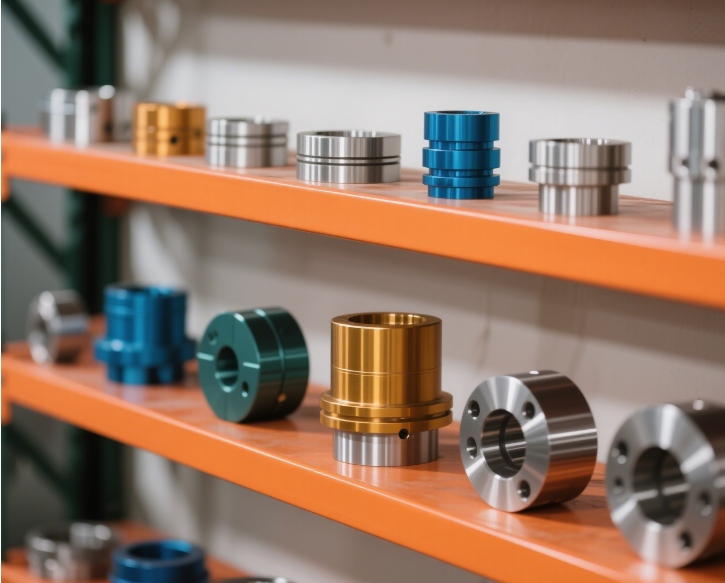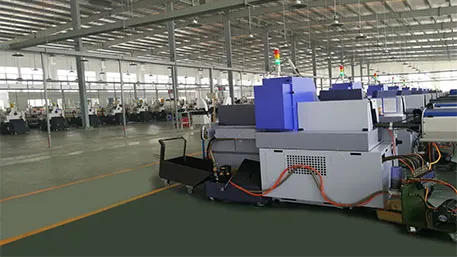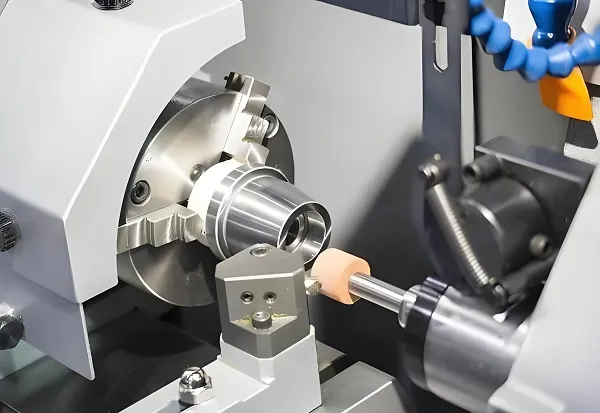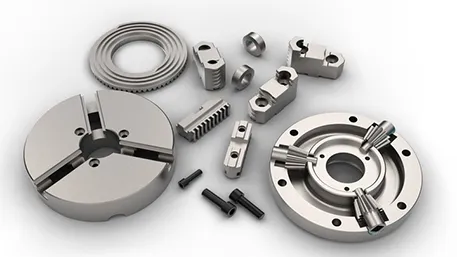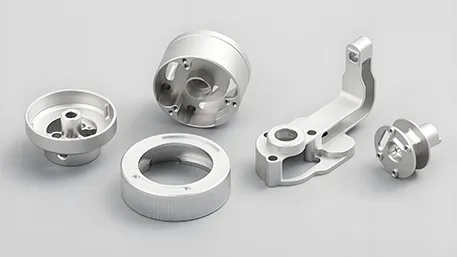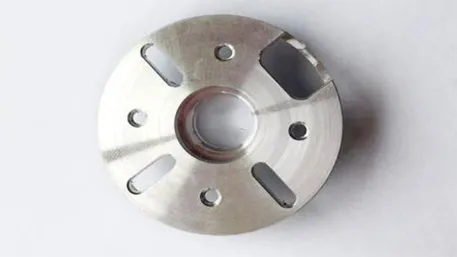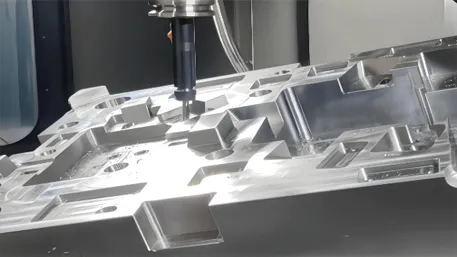5 axis machining is an advanced CNC (Computer Numerical Control) manufacturing process that enables a cutting tool to move along five different axes simultaneously. Unlike 3 axis machines, which operate along the X, Y, and Z linear axes, 5 axis systems add two rotational axes (typically A and B, or B and C), allowing the tool or workpiece to tilt and rotate. This multi-axis movement eliminates the need to reposition the part manually during production, enabling the creation of highly complex, contoured, or undercut geometries in a single setup. Renowned for its precision and efficiency, 5 axis machining is critical for producing parts with intricate designs that demand tight tolerances, making it a preferred choice in industries where complexity and accuracy are paramount.
Detailed Analysis of 5 Axis Machining
1. Core Technologies
5 axis machining relies on several key technological advancements:
- Multi-Axis Coordination: The system synchronizes movement across three linear axes (X, Y, Z) and two rotational axes (e.g., A rotates around X, B around Y). This coordination is managed by advanced CNC controllers that calculate real-time toolpaths to maintain optimal cutting angles.
- CAD/CAM Software: Specialized CAM programs generate toolpaths that account for the part’s geometry and the machine’s rotational capabilities. These programs simulate the machining process to avoid collisions between the tool, workpiece, and machine components.
- High-Torque Spindles: To handle tough materials like titanium or Inconel, 5 axis machines are equipped with high-speed, high-torque spindles (often 15,000–40,000 RPM) that deliver consistent cutting power.
- Dynamic Workholding: Fixtures and clamps are designed to secure the workpiece while allowing unobstructed access to all surfaces, minimizing the need for repositioning.
2. Manufacturing Process
The 5 axis machining workflow involves these steps:
- Design & Programming: Engineers create 3D CAD models of the part, focusing on complex features like undercuts or curved surfaces. CAM software then generates toolpaths that leverage all five axes, optimizing cutting angles to reduce tool deflection and improve surface finish.
- Workpiece Setup: The part is mounted on a rotary table or fixture that enables rotational movement. The setup is validated using laser probes or touch sensors to ensure alignment with the machine’s coordinate system.
- Tool Selection: Cutting tools (e.g., ball-nose endmills for contours, tapered tools for undercuts) are chosen based on the material and part geometry. Tool length and diameter are programmed to avoid collisions.
- Machining Execution: The CNC controller executes the toolpath, adjusting the rotational axes in real time to keep the tool perpendicular to the workpiece surface. This reduces vibration and ensures uniform cutting forces.
- Inspection: Finished parts are inspected using coordinate measuring machines (CMMs) or 3D scanners to verify dimensional accuracy, often within tolerances as tight as ±0.0005 inches.
3. Materials Used
5 axis machining is versatile across a range of materials, including:
- Metals: Titanium, stainless steel, aluminum, and nickel alloys (common in aerospace and medical applications).
- High-Performance Plastics: PEEK, PTFE, and polyimide (used in medical and aerospace parts requiring chemical resistance).
- Composites: Carbon fiber-reinforced polymers (CFRP) and glass fiber composites (for lightweight, high-strength components in automotive and aerospace).
- Exotic Materials: Inconel (for high-temperature applications like jet engines) and ceramics (for heat-resistant parts).
The choice of material influences cutting parameters: for example, titanium requires slower feed rates and coolant to prevent overheating, while aluminum can be machined at higher speeds.
4. Types of Products Produced
5 axis machining excels at creating parts with complex geometries, such as:
- Aerospace Components: Turbine blades, engine casings, and wing spars, which feature curved surfaces and internal channels.
- Medical Implants: Hip and knee replacements with porous structures for bone integration, and cranial plates with contoured edges.
- Automotive Racing Parts: Custom intake manifolds, suspension components, and gearbox housings optimized for performance.
- Mold & Die Tools: Injection molds with undercuts or deep cavities, used to produce plastic parts like smartphone cases.
- Artistic & Custom Parts: Sculptural components, jewelry, or prototype designs that require intricate detailing.
5. Key Applications & Industries
5 axis machining is indispensable in industries demanding complex, high-precision parts:
- Aerospace & Defense: Producing aircraft engine components (e.g., turbine blades with twisted profiles) and missile guidance systems, where weight reduction and aerodynamic efficiency are critical.
- Medical Devices: Manufacturing patient-specific implants and surgical instruments, where the part must conform to unique anatomical structures.
- Motorsports: Creating lightweight, high-strength parts for Formula 1 cars or racing motorcycles, where every gram of weight savings improves performance.
- Energy: Fabricating components for wind turbines (e.g., gearbox parts) and oil rigs (e.g., valve bodies) that operate under extreme conditions.
- Luxury Goods: Crafting high-end watch cases, jewelry, and musical instrument components with intricate engravings or contours.
6. Common Scenarios & Advantages
5 axis machining is ideal for scenarios such as:
- Complex Geometries: Parts with undercuts, compound angles, or curved surfaces (e.g., turbine blades) that cannot be machined with 3 axis systems without multiple setups.
- Reduced Lead Times: Completing a part in one setup eliminates the need for manual repositioning, reducing production time by 30–50% compared to multi-setup 3 axis machining.
- Improved Surface Finish: Maintaining optimal cutting angles minimizes tool marks and reduces the need for post-processing (e.g., polishing).
- Tight Tolerances: Achieving tolerances as low as ±0.0001 inches, critical for aerospace or medical parts where functionality depends on precision.
However, 5 axis machining has limitations: higher initial investment (machines cost 2–5 times more than 3 axis models), increased programming complexity, and the need for skilled operators to manage toolpath simulations and collision checks.
In summary, 5 axis machining represents a pinnacle of CNC technology, enabling the production of complex, high-precision parts that drive innovation in industries where design complexity and performance are non-negotiable. Its ability to merge efficiency, precision, and versatility makes it an essential tool for manufacturing the most demanding components in modern engineering.
